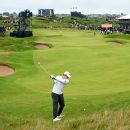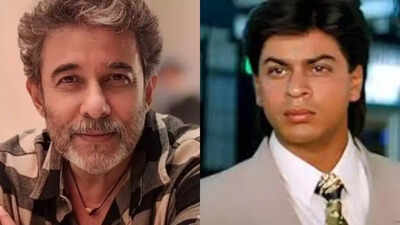MELBOURNE, Australia — World No. 2 Carlos Alcaraz lost in the quarterfinals of the Australian Open, going down to No. 6 seed Alexander Zverev in four enthralling sets, 6-1, 6-3, 6-7(2), 6-4.
Alcaraz had already achieved a career-best result in Melbourne coming into the quarterfinal matchup, but Zverev jumped out early to take the first two sets.
Alcaraz fought back in the third — breaking Zverev who was serving for the match at 5-3 — but was unable to sustain his level in the fourth, bowing out in Melbourne in three hours and six minutes.
Here are three key takeaways from the match.
Zverev played lights-out tennis early
Sometimes you just need to credit the opponent for playing well. While a lot of the attention was on the Spaniard and whether he could challenge Novak Djokovic for his second Slam title, Zverev swooped in and played arguably two of the best sets of tennis seen in Melbourne in some time, and possibly his best to date.
On the local telecast, commentator Todd Woodbridge said Zverev was striking the ball as well as he’d ever seen. Through two sets, Zverev had just nine unforced errors, while Alcaraz, who started the match slowly and almost lethargically, hit 22.
Zverev’s serving, too, was on another level. After two sets, the German was hitting 90% of his first serves, winning 84% of those points. And on the four occasions Zverev had to conjure a second serve? He won all four points — barely giving Alcaraz a look in his service games.
After breaking to love in Alcaraz’s first service game, the momentum was with Zverev as he hunted winners and forced Alcaraz to uncomfortable positions on the court, and it clearly rattled the Spaniard, who only really started to get a grip on the contest midway through the third set.
Alcaraz got off to a slow start
It never bodes well when a player double-faults the first service point of his match, and that’s exactly what Alcaraz did, to murmurings around Rod Laver Arena.
It didn’t get any better. Alcaraz was broken to love in his first service game — making three bad errors in a row — and a blink of the eye later, Zverev had skipped out to a 3-0 lead after just eight minutes of play.
It’s hard to articulate just how poorly Alcaraz played at times. On at least three occasions during the first hour of play, the world No. 2 attempted his usually-reliable drop shot, but they weren’t effective, allowing Zverev ample time to chase down and punish the return ball.
In the first set, Alcaraz’s first serve percentage was just 55%, and he was winning just 50% of the points when his first serve was in play. He hit just two winners and had 11 unforced errors.
Coming into the clash, the Spaniard was 0-6 at majors when dropping the first two sets, including a loss to Zverev in the 2022 French Open quarterfinals. While Zverev’s level noticeably dropped in the third (at least, compared to his opening two stanzas), Alcaraz was unable to keep his own game at a high enough level for long enough, eventually succumbing in a tight fourth set.
Alcaraz is still just 20 years old
He certainly doesn’t look it, but Carlos Alcaraz is still very young.
Having won his first Slam just a few months after his 19th birthday, it’s easy to expect Alcaraz to just “go on with it,” following in the footsteps of other generational talents like Djokovic, Roger Federer and Rafael Nadal. But it must be remembered Federer was 21 when he won his first Slam, and Djokovic 20 when he first won in Melbourne back in 2008.
And with Djokovic not expected to play forever, there will be a vacuum at the top of men’s tennis that will allow opportunities for Alcaraz — a pure hitter with one of the best forehands on the tour — to chalk up Slam wins.
He already has the one-up on rivals his age, like Zverev, Jannik Sinnerand Holger Rune to name a few, and will more than likely win plenty more as his career develops. He will learn from nights like he had against Zverev in Melbourne — you just can’t give the world’s best tennis players a two-set lead in a Slam quarterfinal.
























































